Local SEO For Businesses With Multiple Locations
Local SEO for multiple locations refers to the process of optimizing multiple business online presences for one company. This strategy is especially important for local franchises, chains, businesses with multiple branches, or service area businesses.
Local Google rankings depend primarily on the location of a business. That’s why it’s important to focus on a local SEO strategy that focuses on optimizing business websites depending on their location. So how can you optimize your business for multiple locations?
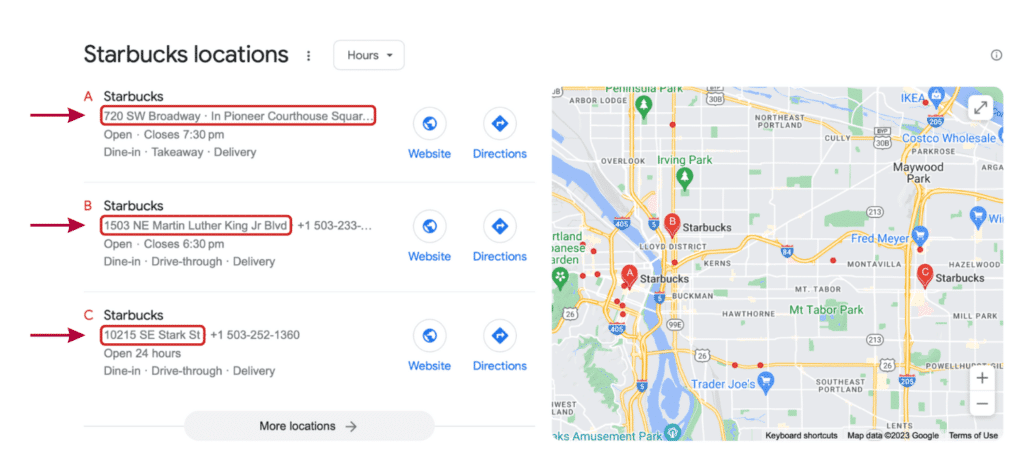
A local SEO strategy for multiple locations includes the following concepts:
- Website Structure
- Google Business Profile Strategy
- On-Page Optimization for multiple locations
- Local citations, directories & social profiles
1. Website Structure
The website structure of a multi-location business ensures that each location can be accessed smoothly and that location-specific content is easy to discover.
The main challenge consists of keeping everything as simple as possible. And don’t forget, there is no perfect way to set this up. Every type has its pros and cons.
When you’re starting out, you mostly only have one location.
In that case, it’s recommended to use your homepage as your primary location page (also known as service area page, city page, or district page) because you only have one.
By the time you open up more and more locations, you can transition to a more multi-functional homepage that displays all the things important about your business.
That’s when you can create separate location landing pages, your money pages.
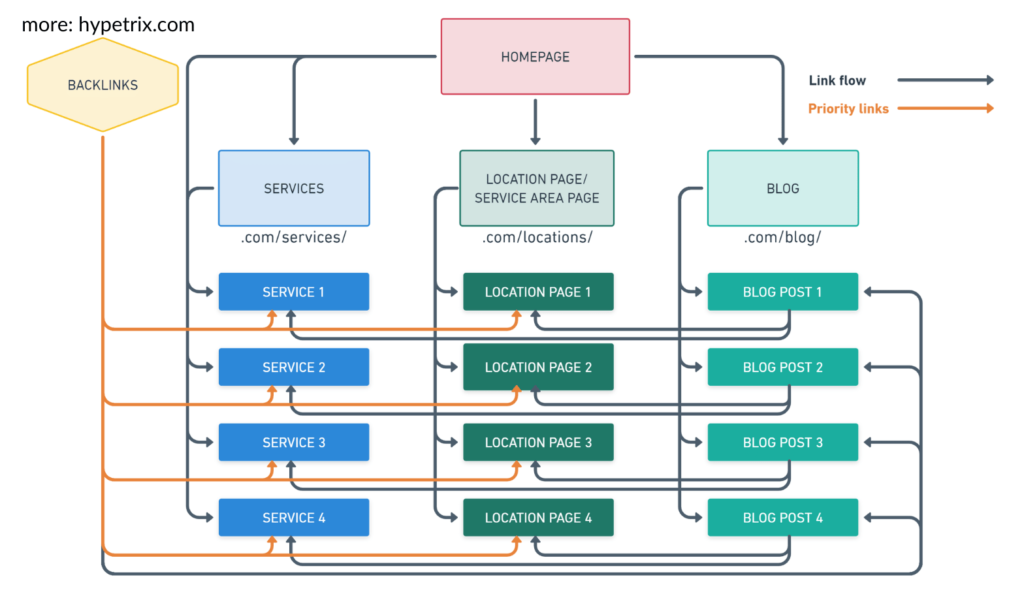
Navigation
Since Google transitioned from EAT to EEAT (Experience, Expertise, Authoritativeness, Trustworthiness) it’s most critical a user is able to navigate through a website effortlessly and it’s easy for them to find the information they seek.
When optimizing your multi-location website navigation, prioritize adding your primary pages like
- Homepage
- Store-locator (store finder)
- service or product pages
- location pages (stores or offices)
- contact page
- about us page
In addition to these pages, you can add your most valuable content as well. It can consist of a photo gallery, a review page, or any type of location-specific content that can improve user experience. Sometimes it can make sense to create a new menu point “Guides” or “Rules” depending on your individual business type.
For a multi-location business with more than 10 locations, it can make sense to add a store-locator to your website that is accessible from the main navigation. This is how users should be able to navigate through the different store locations.
A service area business that has offices in different locations doesn’t need that, as there is no address that you’ll want to show. However, you can add a service area map to each location page so potential customers know where you can serve them.

Pro tip: Don’t use your location modifier in your general service pages if your business is located in a smaller town outside a main city. You want to leverage Google’s proximity algorithm to rank for your plain service keywords in the area. If you add a specific location modifier, you’ll turn off visitors from other adjacent towns and eventually stop ranking in those areas, even though you’d serve them or like customers to come to your shop.
Logical URL structure
A logical site structure contributes to easy navigation. You should work towards a logical and consistent URL structure that reflects the hierarchy of your website. That includes creating a page for each of your multiple locations. Here are some URL structure examples for multiple locations on a website:
https://businessname.com/locations/new-york/
This one is my favorite and can be implemented in many business industries. This type lets you list your locations on the “locations” hub page so that users can easily navigate through your different locations.
Other structures:
https://businessname.com/new-york/
https://businessname.com/new-york/location-a/
https://businessname.com/new-york/location-a/service/
https://businessname.com/new-york/location-a/product/
https://businessname.com/stores/new-york-city/
As I mentioned earlier, there is no perfect website structure for a multi-location business. As long as you keep one page for each location relevant to the specific audience in that area, you’ll be fine.
I want to give you a more extensive example so you can fully understand how to set this up and why.
Internal linking
Internal linking helps search engines like Google understand the relationship between the web pages on your site. This is crucial for both user experience and SEO performance.
Particularly for multi-location businesses, internal linking can connect your location pages with locally relevant content. For local SEO, “A” in “EAT” refers to topical authority and geographical authority. Connect relevant local content, and you’ll win area authority that will undoubtedly lead to better local search rankings.
Also, engagement is one of the most significant concepts in SEO. Google and other search engines look at how users interact with your website. Most of those interactions happen through navigating through internal links.
The better your interlink your content contextually, the better search engines will understand the relation between the pages. If you do this correctly, you’ll see your rankings go through the roof.
Schema Markup for multiple locations
Adding Organization Schema Markup for multiple locations can help Google differentiate your different locations. This is a surefire way to make Google understand where your business locations are located and to which company they belong.
Local Business Schema is added to your website through a code format like JSON. Here is an example of a local business Schema code that you can add to each of your location pages:
<script type="application/ld+json">
{
"@context": "https://schema.org",
"@type": "LocalBusiness",
"name": "My Local Business",
"image": "https://mybusinessURL.com/images/featuredimagemybusinessURL.jpg",
"@id": "",
"url": "https://mybusinessURL.com",
"telephone": "765 777 8876",
"address": {
"@type": "PostalAddress",
"streetAddress": "Main street 55",
"addressLocality": "New York City",
"addressRegion": "NY",
"postalCode": "10001",
"addressCountry": "US"
},
"geo": {
"@type": "GeoCoordinates",
"latitude": 43.9992828,
"longitude": 44.2883773
},
"openingHoursSpecification": {
"@type": "OpeningHoursSpecification",
"dayOfWeek": [
"Monday",
"Tuesday",
"Wednesday",
"Thursday",
"Friday"
],
"opens": "09:00",
"closes": "17:00"
},
"sameAs": [
"Facebook.com/mybusinessURL",
"Twitter.com/mybusiness",
"Instagram.com/mybusiness"
]
}
</script>
2. Google Business Profile Strategy
Create and claim your GBP
In order to complete and update multiple Google Business Profiles I recommend you to check out bulk upload features, how to use the API, and how to manage multiple locations through an agency dashboard.

NAP Consistency
The fundamental concept of well-optimized Google Business Profiles is NAP consistency. You want to make sure your Google Business listings for each location have unique addresses and phone numbers.
Google Business Profile Name
You can keep the same name across multiple profiles – although it can be beneficial to your rankings to add a geo modifier to your name. If you want to improve your rank for multiple locations, be sure to stay compliant with the Google Business Profile name rules.
Services & Products
If you sell different products or services at different locations, you only want to add relevant services to your Google Business Profile. Nothing is more annoying than visiting a business for a specific service just to realize the business doesn’t provide it.
Hours
You may be having different business hours depending on your business locations. Be sure to keep them up-to-date and accurate. It’s the same problem with the missing services, if someone shows up at your location and you’re closed because you haven’t updated the hours on your GBP, that can not just lead to a frustrated customer but a negative review as well.
Google Business Profile Description
Each of your Google Business Profiles should have a unique Google Business Profile description. Think about the factors that make each location unique and create a relevant Google Business Profile description.
Upload relevant & high-quality photos
Each of your Google Business Profiles needs unique photos that local customers can relate to. If your photos aren’t relevant to your specific location, your customers will be confused when they search for you. The same goes for most service area businesses.
Google Posts
Create Google posts with location-specific content and exclusive discounts for each location.
3. On-Page Optimization for multiple locations
Location-Specific Content
Be sure that each location page has content made relevant to the local audience. That includes accurate information about hours, services/products provided in that particular location, location-related reviews, and additional relevant content about the individual location.
Also, localized content like photos and videos are key to increasing conversions on those pages. Customers want to feel addressed when they arrive on one of your location pages. Make it about their specific needs, which includes mentioning the area you’re located in or that you serve.
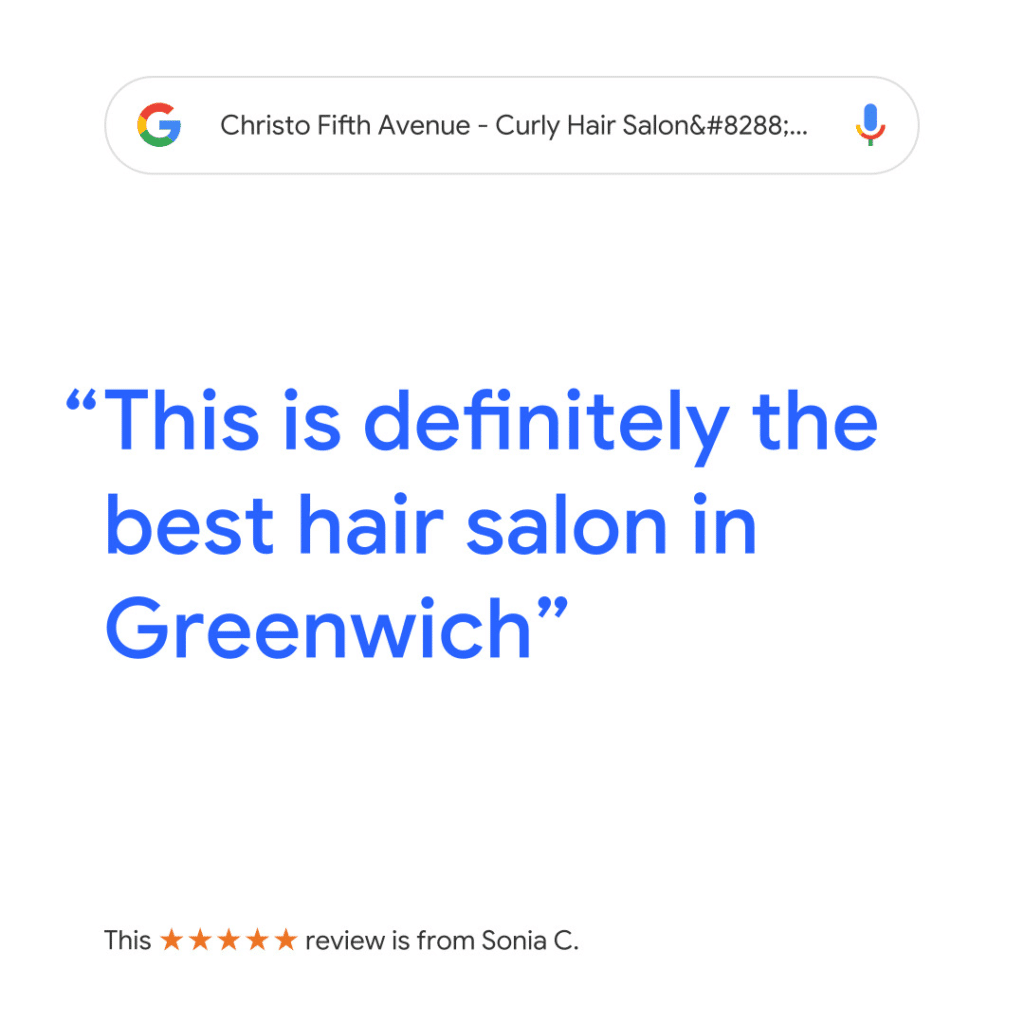
Keyword & Entity Usage
You want to use your main keyword and industry as well as location-specific entities throughout your location page content. Google evaluates your content based on relevant topics discussed on your pages.
The more relevant entities you use the better for your local search rankings. Remember, relevance is one of the biggest ranking factors on local search.
Your header tags (H1, H2, H3 …) should include relevant entities, your service keywords and their synonyms and close variants, as well as location keywords like “New York City”.
Additionally, all pages need to have unique page titles and meta descriptions relevant to the specific location.
Be sure to include the main service/product, other long-tail keyword variants, and geographical information like city name and state abbreviation.
Here is where you can potentially add the main keyword + the geographic modifier.
On-Page Factors
- URL
- Title tag
- Meta description
- H1, H2, H3 headings
- Above-the-fold spot content
- Internal link anchor texts on other pages pointing to your page
- Table of contents
- FAQs
- FAQ Schema
- General body copy
- Image file names, titles and alt texts
Google Map
Each of your location pages should include an embedded Google Map that either shows the service area or location of your business as you use it on your Google business Profile. You can even add manual driving directions underneath if you want to provide that sort of help to potential customers.
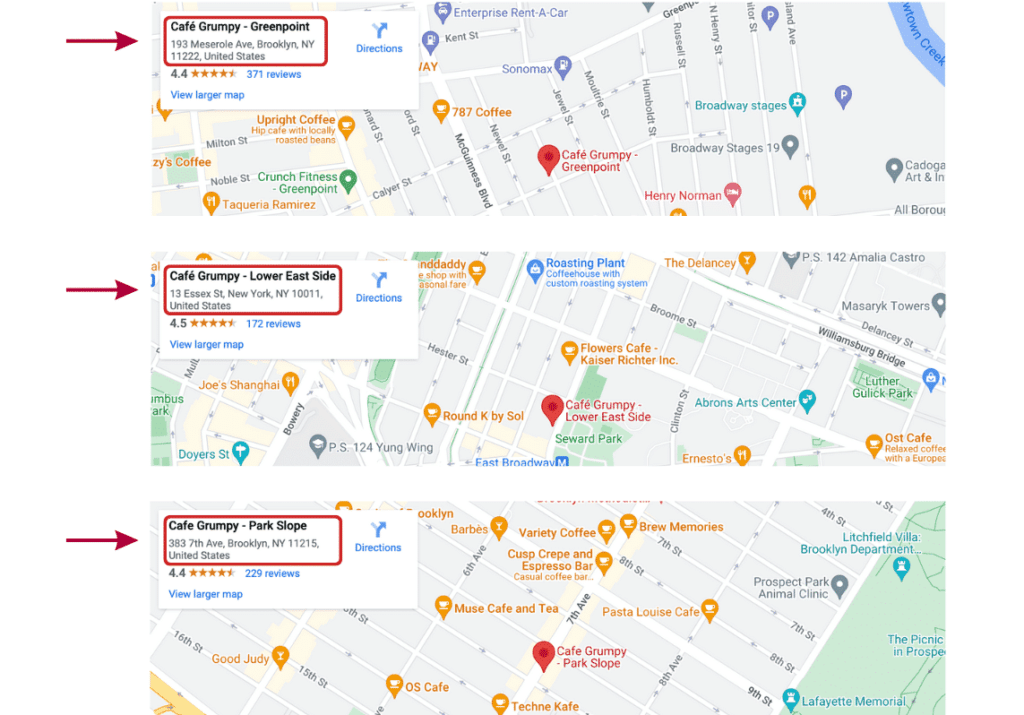
4. Local Citations, Directories, Review Sites & Social Profiles
Being listed on all relevant directories and sites like Yelp, Bing, Apple Maps, Facebook, Instagram etc is important for every local business. However, as a multi-location business, you want to create citations for each of your locations and keep the NAP (name, address, phone number) consistent.
That means that every single one of your locations should be listed on every local directory, site, or social network. However, you don’t necessarily need location-specific Instagram accounts unless you strive to be a content factory that creates ongoing local-relevant content.
It can get very messy for multi-location businesses. To avoid that, you can use services like Yext to maintain and keep those profiles updated. Treat those profiles just like you treat your Google Business Profiles and you’ll be just fine.
Be sure to list your business on the following platforms regardless of your industry:
Main Citation Sources
- Yelp
- Bing
- Apple Maps
- Foursquare
If you want to track the traffic coming from the most valuable directories, simply add UTM parameters to your website URLs on those specific platforms.
5. Build Backlinks to Each of Your Location Pages
You should aim for building backlinks to each of your location pages or blog articles related to the individual location.
Most website owners don’t want to link to a money page like a location page so it’s better to build indirect backlinks.
An indirect backlink would be a link that points to one of your blog articles. Then that blog article links back to your city page.
With the result that link equity will be forwarded to your location page. Please check this website structure graphic for further explanation.
Here are a few methods to get relevant links to your service area or city pages:
- Citations from local business directories, global sites, or industry-related directories
- Ask your neighbors for a link exchange (as long as it’s relevant it’s not going to do any harm)
- Guest post outreach
- Link insertion outreach
- Create valuable articles that are linked to automatically (people link back to good content)
Here is a tip: Try to create valuable local content in terms of blog articles. Ideally, those articles are going to rank for search terms that also convert plain visitors into paying customers. For example, a local auto repair shop could create content about inspections in the area. That’s something people are very interested in.
FAQ
How do I merge Google reviews for multiple locations?
The following points explain how you can merge Google reviews for multiple locations:
- Reviews can be moved from an old Business Profile to a new one upon request or may be moved automatically in some cases.
- If significant business changes occur, irrelevant reviews may be removed.
- Business reviews should be relevant, helpful, and reliable.
- Creating a new Business Profile due to a change in location or ownership is not advised.
- If a new Business Profile is inadvertently created and verified, reviews can be transferred by contacting support.
- When a business moves to a new location but keeps the same name, Google usually transfers the reviews, except for businesses heavily tied to their locations.
How do I target multiple cities without hurting my SEO?
You can target multiple cities without hurting your SEO by creating location pages.
Additional location pages are built to rank for exactly one key phrase and its synonyms/close variants.
As long as you create high-quality content on those pages you’ll not hurt your SEO.
If you run a plumbing business and want to increase visibility through location pages you can use a URL structure like this:
plumbingbusiness.com/locations/long-island/
This page targets exactly “Plumber in Long Island”.
plumbingbusiness.com/locations/brooklyn/
This page targets exactly “Plumber in Brooklyn”.
plumbingbusiness.com/locations/queens/
This page targets exactly “Plumber in Queens”.
These pages shouldn’t be confused with your general service pages like these:
plumbingbusiness.com/services/pipe-repair
plumbingbusiness.com/services/drain-repair
These pages are supposed to rank through proximity only for terms like “pipe repair”, pipe repair & maintenance” and for the other page “drain repair” or “drain repair near me”.
Summary
Performing local SEO campaigns for businesses with multiple locations doesn’t have to be complicated. If you follow my guide to improve your online presence for all your locations, you’ll increase your visibility big time and keep everything under control without risking to lose performance.





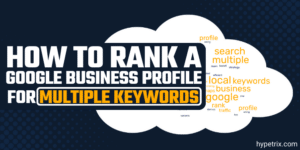
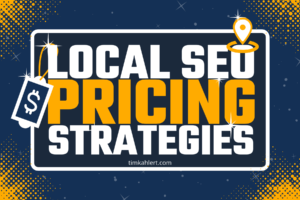
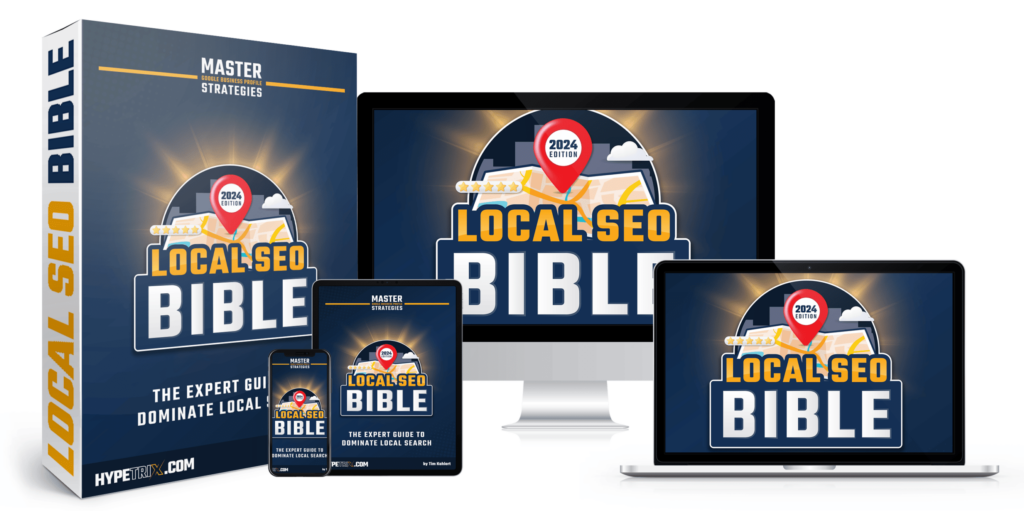
Another excellent post Tim, full of golden nuggets. I use location pages regularly, and still trying to find the absolute best way. I’ve tried many different URL structures, but yours looks great, and I think is definitely the way forward.
Thanks for sharing your knowledge and experience.
Appreciate it, thank you, Roger!
Useful , thanks, almost 90% that i do but when somebody telling the same you know you are doing right, also a scheme visualize…
Absolutely!